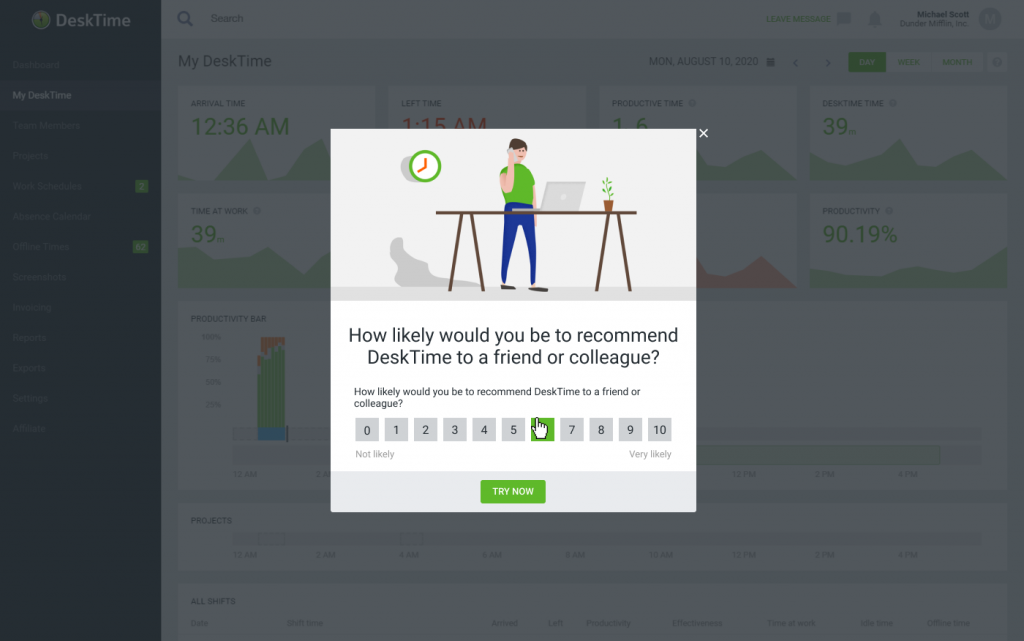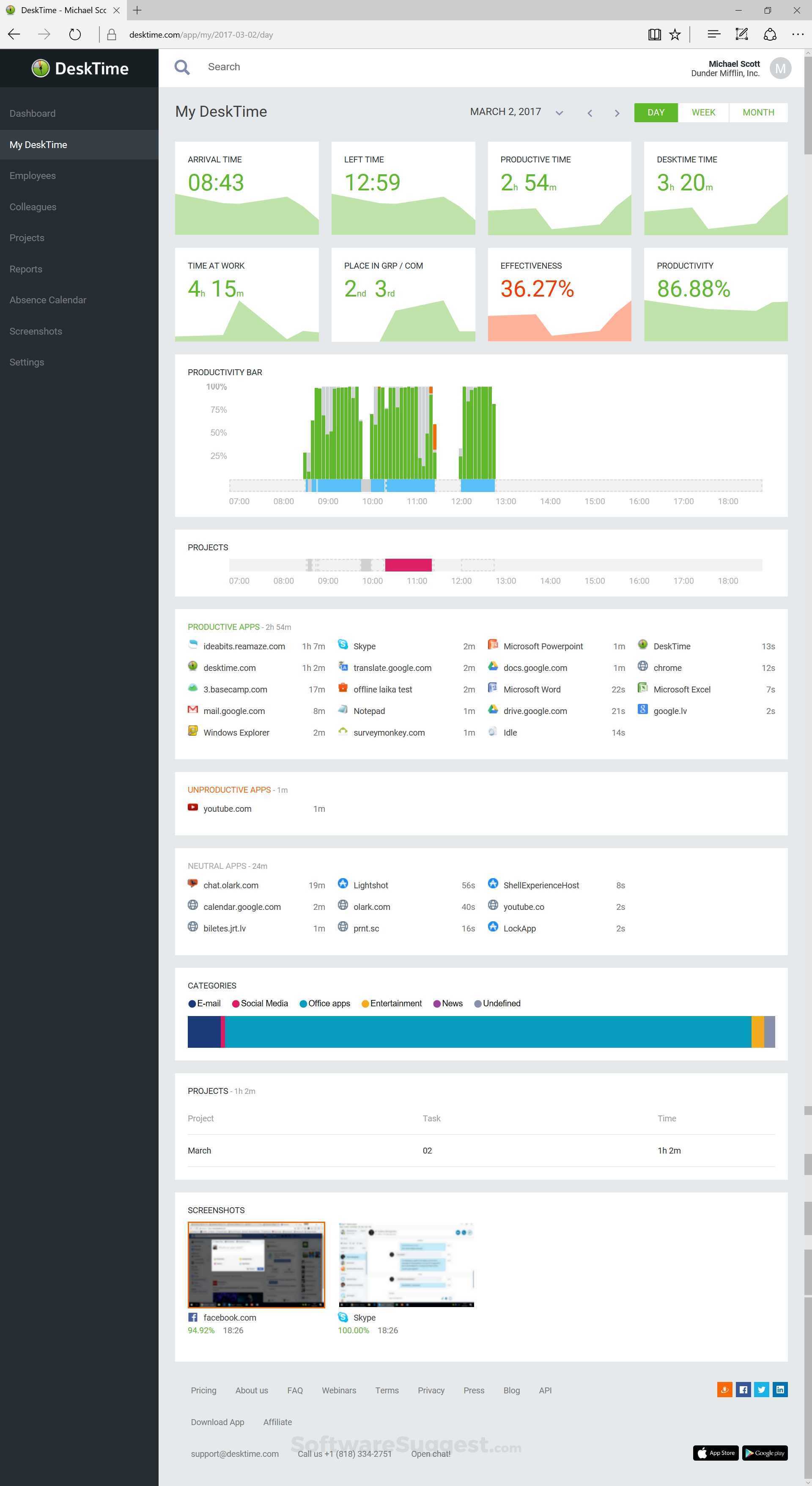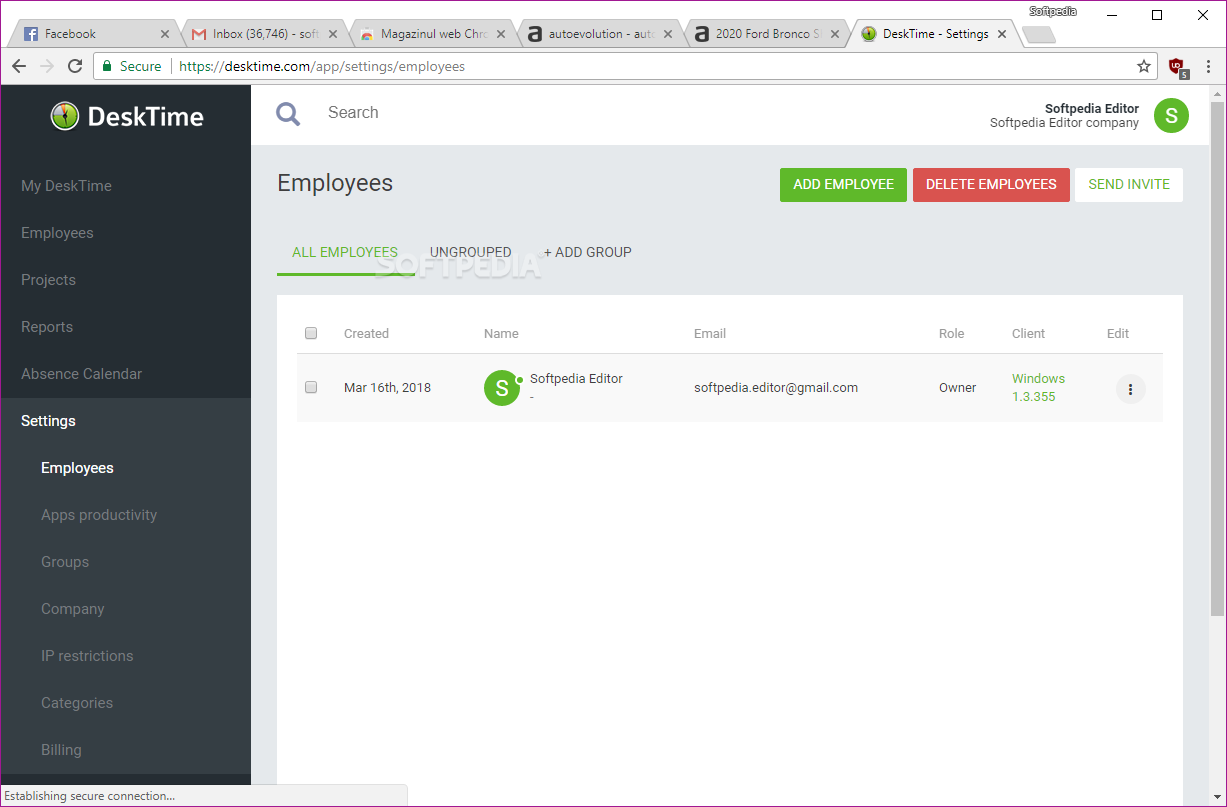
The main widget dashboard in the My DeskTime tab, which can be filtered by custom time intervals, gives you a good looking at-a-glance view of employee productivity. Pricing Scales Based on User Volume at Work Examiner).
#Desktime pro pro#
In particular, we looked at how DeskTime Pro stacks up to the other productivity-focused tools in this roundup, ActivTrak and and Work Examiner (60.00 Per Perpetual License. DeskTime can also integrate with Google Calendar and Microsoft Outlook to sync calendar events in DeskTime and vice versa.įor the purposes of this review, we focused on the employee monitoring features of the platform. There’s also an Absence Calendar tab that can track weekly and monthly time with absence categories such as a business trip, conference, parental leave, sick day, vacation, etc. The Projects tab of the DeskTime dashboard can filter time tracking and productivity data by project status, groups, or project owners, and lists project time and productivity percentages related to particular tasks and project members.Īs far as time tracking goes, the main My DeskTime dashboard shows arrival time and time at work, and a few custom metrics such as DeskTime Time (online time spent on your machine) versus Productive Time. On the time tracking front, DeskTime is similar to Time Doctor (Visit Site at Time Doctor) and Hubstaff in that it can track time in relation to particular projects and tasks.



The dashboard shows you straightforward step-by-step instructions, but all I really had to do was open the installer, go through the installation wizard, and within a minute my agent was installed and data from my machine began populating the DeskTime control panel.ĭesktime Pro falls somewhere between some of the pure-play time trackers in this roundup and middle tier of productivity-focused monitoring solutions.
#Desktime pro windows 10#
After starting my free trial and logging into the control panel, I clicked the big green button on the top right to download the DeskTime agent onto my Windows 10 ($139.00 at Microsoft Store) machine. You can connect your login credentials with Facebook, Twitter, or LinkedIn when you sign up. All paid plans also come with a 14-day free trial.ĭeskTime setup was quick and easy. The DeskTime Pro plan, which we tested, comes with access to the cloud-based control panel, tracking of URLs and window titles on an employee’s screen, reports, projects, screenshots, and data history, as well as billing rates and vacation/absence tracking. DeskTime also has an Unlimited plan, with pricing is calculated on a custom basis based on the user count. For example, DeskTime Pro costs $18 per month for three users, $30 per month for five users, $60 per month for 10 users, $119 per month for 20 users, and $228 per month for 50 users. The paid DeskTime Pro plan starts at $7 per month for a single user, and scales down per-user with volume-based pricing, which you can gauge using the slider on the company’s website.
#Desktime pro android#
Pricing and SetupĭeskTime is free for a single user with the DeskTime Lite plan, which includes basic time tracking, application tracking, and access to the DeskTime Android and iOS apps. However, if your business is looking for a good automated time tracker with a useful collection of monitoring features and productivity reporting, DeskTime Pro will get the job done.
#Desktime pro software#
This simple user activity and application tracking software offers app and URL tracking, screenshots, custom reports, and solid productivity monitoring that you can map to specific projects and tasks.ĭeskTime is not as dynamic a team behavior analytics platform as Editors’ Choice ActivTrak (Free at ActivTrak), or as powerful a full-blown monitoring tool as Editors’ Choice Teramind.

DeskTime Pro (which begins at $7 per user per month, with volume discounts) is a solid time tracking tool that offers productivity-focused employee monitoring.


 0 kommentar(er)
0 kommentar(er)
